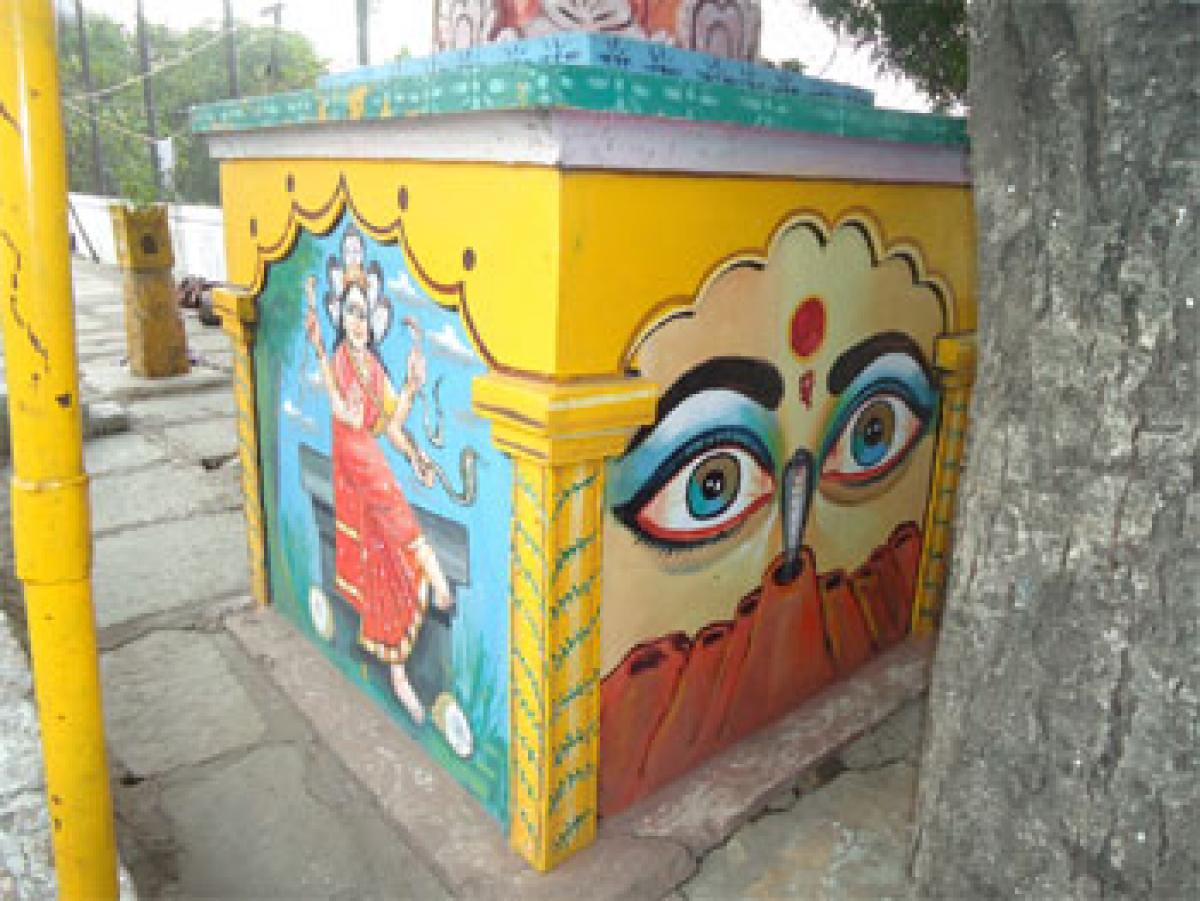Live
- NTR should be awarded Bharat Ratna, says CM
- Vizag mafia rules sand ramps in Srikakulam district
- Unselfishness is a Lie
- ICTPL welcomes maiden vessel MV KSL Fuyang
- BJP leaders mock Rahul's speech
- Analysing Happiness
- Two-day ToT organised for trainers
- Savarkar preferred Manusmriti to Constitution: Rahul
- Daily Horoscope for 15 December 2024: Embrace Today’s Insights of Your Zodiac Sign and Unlock Your Potential.
- Beyond The Flames
Just In

After completing my Master of Fine Arts (Painting) at MS University, Baroda in 2005, I was freelancing at private art studios in Baroda for about three years back. As a practicing artist, apart from participating in several solo and group shows, enrolling in PhD brought me back to my hometown Hyderabad.
 Nirmala’s research tries to unravel the history behind the formation of local shrines and modes of image making and worship of local goddesses in Hyderabad and Secunderabad. Her interests lie in historicising contemporary art and popular visual culture of the city
Nirmala’s research tries to unravel the history behind the formation of local shrines and modes of image making and worship of local goddesses in Hyderabad and Secunderabad. Her interests lie in historicising contemporary art and popular visual culture of the city
After completing my Master of Fine Arts (Painting) at MS University, Baroda in 2005, I was freelancing at private art studios in Baroda for about three years back. As a practicing artist, apart from participating in several solo and group shows, enrolling in PhD brought me back to my hometown Hyderabad.
Ever since the city has given me a fresh whiff of inspiration and vigour in not only rethinking about my own artwork but also in trying to research about the visual culture and the rich art historical legacy that it has to offer to a scholar.
While working as representative for Hyderabad in research and digital documentation for, ‘Bibliography Project’, initiated by Asia Art Archive, Hongkong, I came across periodicals as early as 1920’s in both Telugu and English on art and culture published from erstwhile Madras presidency.
The findings of which were later presented at seminars held at School of Art and Aesthetics, JNU, New Delhi as well as the recent RAWCON-2015 at department of comparative literature, University of Hyderabad.
My ongoing research attempts to trace the vicissitudes in the modes of image making and worship of local goddesses during the last three decades in the twin cities of Hyderabad and Secunderabad in the newly formed state of Telangana.
When one thinks of the ‘visual culture’ of a city, what largely comes to mind is advertising, film banners and enamel paintings on the walls of the roadside shrines. The focus of my thesis is, however,
the idol and images of the goddesses, the rituals and paraphernalia around the shrines as a visual space. Through a frame work of intermediality, I try to map the visuality and its refractions which seem to shape a socio-cultural and political identity unique to the region.
The small shrines, dedicated to numerous local deities such as Pochamma, Maisamma, Yellamma, which largely remained ignored, can now be noticed as developing into larger temples of importance with the support of local leaders, committees and organised devotees.
Vibrant images of Hindu icons like Durga and Kali are the major visual vocabulary that forms the illustrations of sacred or religious art spreading across the city. Although these images are religious and ritualistic in nature,
they may as well qualify as ‘popular visual culture’, firstly, because they are highly consumed by the masses and secondly as they are painted by commercial artists in cheap enamel colours as commissioned by patrons, usually, temple priests, committees or donors annually.
Even though the shrines actually belong to local goddesses such as Pochamma, Yelamma, Maisamma etc, the images of upper caste Hindu pantheon of goddesses ironically adorn the temple premises instead.
Reasons often cited for such replacements being that all deities emanate from the universal form of ‘Shakti’. However, if one tries to unravel the history behind the formation of such shrines, we may come across multiple myths and legends often associated with caste and communities genealogies.
Mapping this modernisation and hybridisation processes that lead to changing visuality of the goddess images. My attempt is to study how images become central in restoration of a regional and cultural identity in the recent times.
(The writer is a Research Scholar, EFL University,Hyderabad)

© 2024 Hyderabad Media House Limited/The Hans India. All rights reserved. Powered by hocalwire.com







